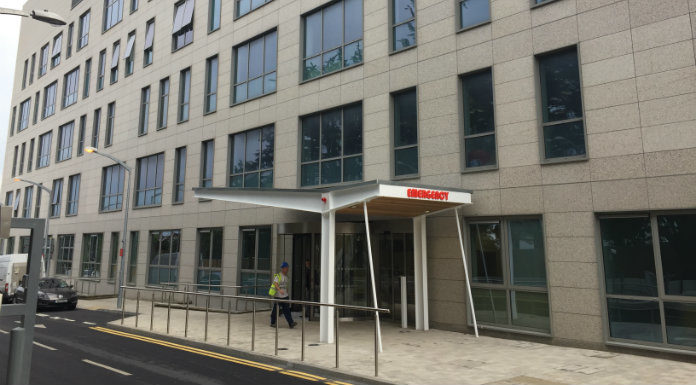University Hospital Limerick has recorded the highest trolley figure ever seen at any Irish hospital in history today.
According to nurses union, the INMO, there were 82 patients left waiting for a bed at the Dooradoyle facility this morning, 47 of those in the emergency department alone.
It’s one more than yesterday’s figure of 81, which marked the second time in as many weeks to hit that figure.
The overall figure is more than two dozen more than the next busiest facility; Cork University Hospital.
Speaking at the Oireachtas Health Committee this afternoon, Labour TD Alan Kelly has described the situation as ‘discrimination’.
Inagh Green Party Councillor Roisín Garvey is a member of the HSE’s Regional Health Foum West, and she’s been telling Clare FM’s Fiona Cahill that there seems to be no end to the rising numbers.
The issue has been raised in the Dáil in the past few minutes, by Sinn Féin leader Mary Lou McDonald.
But the UL Hospitals Group says the 60-bed block under construction in Dooradoyle won’t open until late 2020.
UL Hospitals Group Response – October 2nd, 2019
Presentations at the Emergency Department (ED) in University Hospital Limerick (UHL) have been above average in recent days, including a significant number of elderly and frail patients.
It is acknowledged that our ED is one of the busiest in the country. However, it is a matter of sincere regret to us that admitted patients, especially the frail and elderly among them, face long waiting times for beds to become available.
We wish to reassure the public that every patient at UHL receives expert medical care. We commend the tireless efforts of our staff for working to ensure patients are as comfortable as possible while in our care.
The current challenging situation at UHL arises from a combination of insufficient capacity, including capacity for the significant number of patients requiring isolation; high attendances at the ED; and an unusually high number of delayed discharges. These are patients whose discharge from acute care beds is delayed because the on-going support and care they need is not immediately available to enable their discharge.
Effective tackling of hospital overcrowding requires an holistic, multi-faceted ‘whole-health service’ approach, encompassing additional bed capacity, improved patient flow and the development of integrated care programmes with community services.
While UHL has just 455 inpatient beds, which is entirely insufficient for the needs of the MidWest, the construction of a 60-bed block is under way, with the facility expected to open in Q4 of 2020. In addition, the progression of the separate 96-bed block is a priority for the UL Hospitals Group.
We also continue to work with our community colleagues to progress transition of appropriate patients to the community, and to maximise the use of beds available across the sites of the Hospitals Group.
None of this is to minimise the inconvenience and frustration felt by patients and loved ones who face long waiting times. However, we wish to emphasise that we are working assiduously to address the systemic issues at the root of hospital overcrowding.
For all of these reasons, we appeal to people to attend the ED only if absolutely necessary, and first explore all available options.
For injuries such as broken bones, dislocations, sprains, strains, wounds, scalds and minor burns, people can avoid long waiting times in ED by attending our Injury Units at Ennis and Nenagh Hospitals (8am-8pm every day) and at St John’s Hospital Limerick (8am-6pm Monday to Friday).
Others with less serious illnesses can be treated by their GP or out of hours GP service where they can be referred an Assessment Unit the following day if required.
However, any person who is seriously injured or ill, or worried their life is at risk the will be assessed and treated in the ED as a priority.









